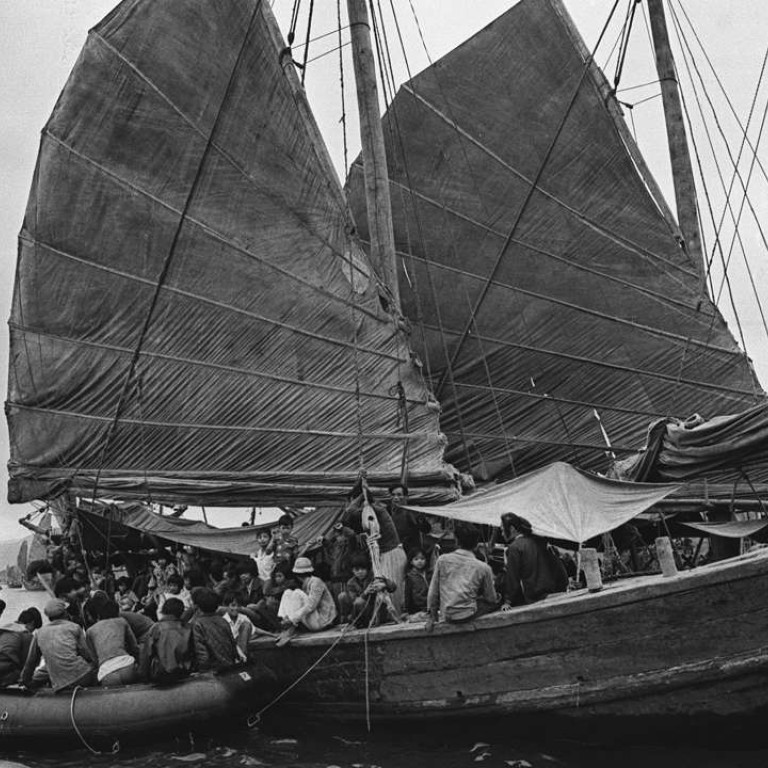
Junk boats turn into tourist icons in Hong Kong waters after centuries as China’s workhorses
Traditional wooden junks, dating back to the Han dynasty, were sturdy and made for long-distance travel
The original junk boat, most commonly used for trade in China and other parts of Southeast Asia, typically sailed long distances, incorporating a sturdy sail and hull design. Its structure also meant it was easy to control, generally glided fast across water and could travel long distances.
The etymology of the word junk is subject to debate. Some suggest it comes from the Portuguese word junco, as the Portuguese were apparently the first Westerners to encounter junks during visits to China. The Portuguese-Chinese word directly translates as “a Chinese vessel”, according to the Concise Dictionary of English Etymology. Alternatively it could originate from the Javanese or Malay word jong, according to the Etymological Dictionary of the English Language.
Historians are also divided over when the junk’s design fully evolved. Historical knowledge of junks is somewhat limited because many were broken up and recycled after about five years’ service, when they became worn out.
Early forms of the junk have been traced back to the basic sailing boats of the 2nd century AD. During the Han Dynasty (206 BC–220 AD), junks tended to have just one or two masts and a shallow hull. They were made from lightweight softwoods and bamboo battens. They gradually increased in size. By the Song dynasty (960-1279) they had four masts. During this period, they were used extensively for trading.
Henry Choi, a Hong Kong-based maritime historian, said the junk became the most effective vessel for facilitating trade because they were cost-effective and resilient. “The river was the highway of China, so the junks had a very important role in transportation and trade,” he said. “They were both the cheapest and the most flexible way of transporting goods. The steam boat required designated ports and the railway was restricted by timetables.”

Junks also became a key source of military strength into the Yuan dynasty (1279-1368). Many historians consider junks to have fully evolved by the Ming dynasty (1368–1644), when they had as many as nine masts.
This move towards multiple masts greatly increased the vessel’s speed, as well as providing a smoother ride overall. Chinese admiral Zheng He is thought to have built the largest junks in history. He had a fleet of about 300 ships with 30,000 crew during the 15th century.
Junks are designed with bulkheads – upright walls within the hull of the ship – which aim to make each compartment as watertight as possible. Camphor pine and fir timber have traditionally been used for the compartments. Their design means that even if one or two compartments flood, the other sections will hopefully remain watertight.
The boats also incorporated a stern-mounted rudder, which had the main advantage of needing less energy to be operated by the helmsman. It also avoided any interference with the handling of the sails, making it better suited to long-haul travel.
Some of the design concepts used for the junk have also been adopted in modern sailing boats, but historians disagree on whether they directly influenced Western shipbuilding techniques. Dr Stephen Davies, honorary fellow at the University of Hong Kong’s institute for the humanities and social sciences, said it made more sense to think of junks as evolving in parallel with Western models. “The junk boat had intrinsic design limitations,” he said.
Junks have traditionally been constructed by “grand masters”, craftsmen who used tools such as the Luban chisel, ink markers, a saw, a hand drill and a mace.

As with shipbuilding techniques across the world, knowledge of specific construction methods has tended to be passed down orally from master to student, and from generation to generation within families. But as of 2010, there were only three of these ship builders remaining in China, all based in coastal Fujian province, according to Unesco. The UN agency subsequently pledged to preserve the ancient shipbuilding technique, adding it to its safeguarding list in 2010.
Junks continued to be crucial for Chinese trade until the 19th century. From 1846-1848, a three-masted trading boat named Keying sailed from the Cape of Good Hope off South Africa to the US and Britain. It was owned by a group of British businessmen, who purchased the vessel in Hong Kong during a period when it was illegal for foreigners to purchase Chinese ships.
Technological advances mean junks are no longer used extensively for trade and military expeditions, but rather for travel and sightseeing. While the term junk officially denotes the traditional Chinese design, in Hong Kong it is now often more liberally used to refer to recreational vessels which incorporate any number of mod-cons. They are typically used to stage either corporate or social events.
The city is home to scores of junk companies offering a range of packages, from basic day or evening hires, to full-blown catered options. One of the most iconic junks, the Aqua Luna, which carries tourists around Victoria Harbour, has red sails because according to an old Chinese legend, the colour appeases the dragon which lives in the clouds and brings bad weather.
According to Dr Davies, the trend of junks becoming tourist vessels is based on nostalgia rather than practicality. “Heritage and tourism are two unholy twins,” he said. “Heritage is not buzzy because people don’t have any wish to return to custom. It is nostalgia. Junks were bum-numbingly hard work. We pretty it all up now. It is just a photo opportunity.”

